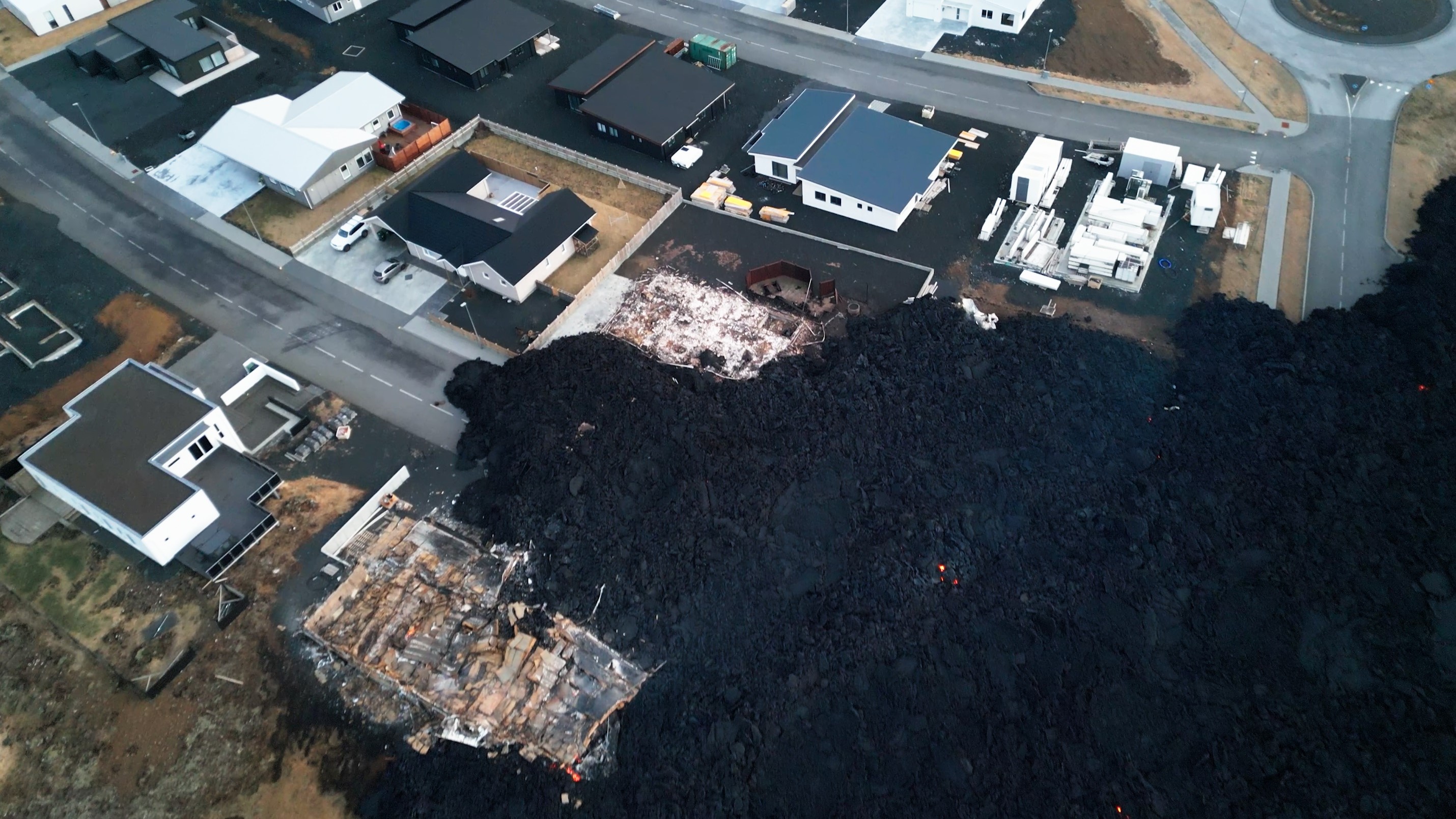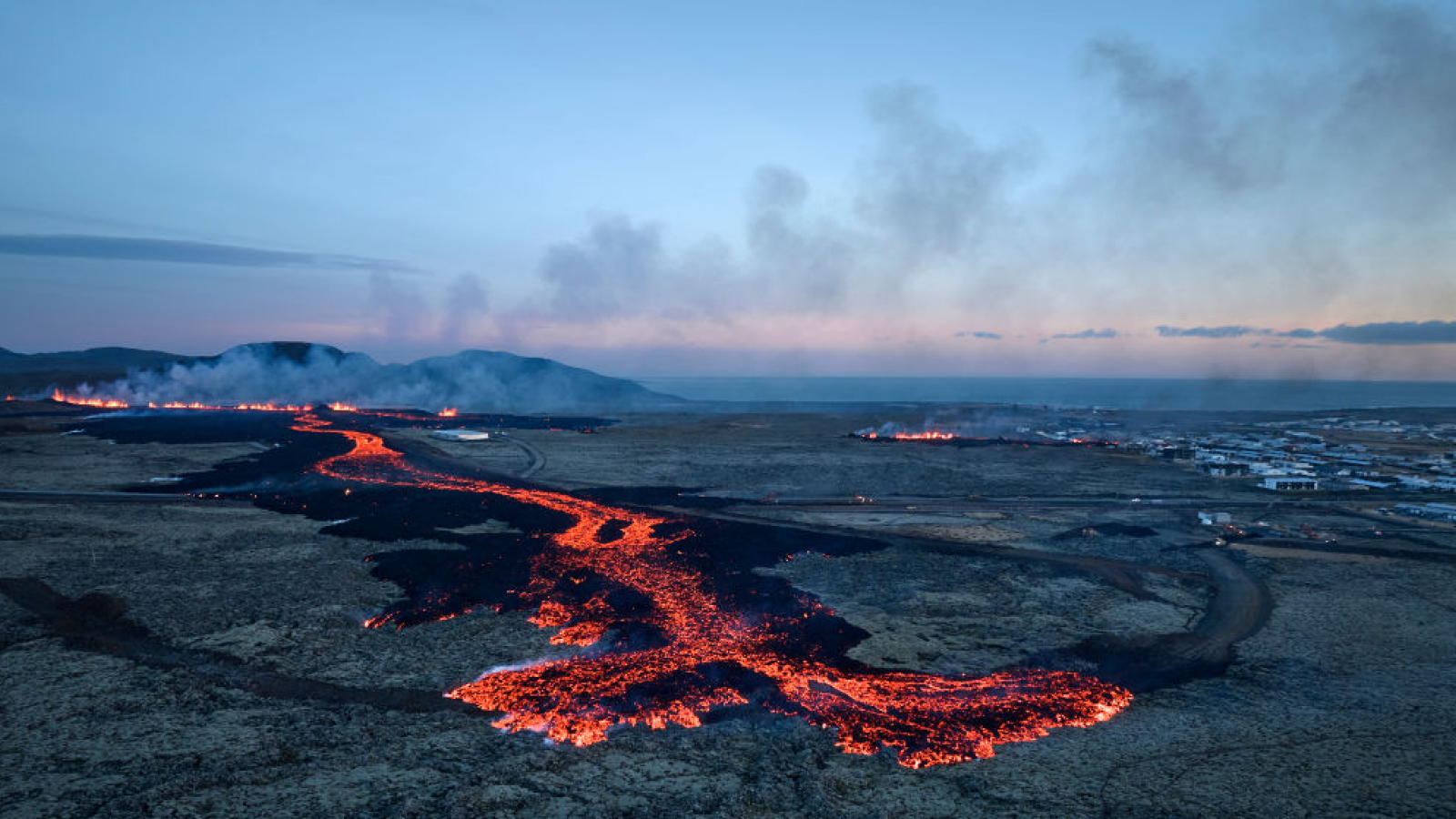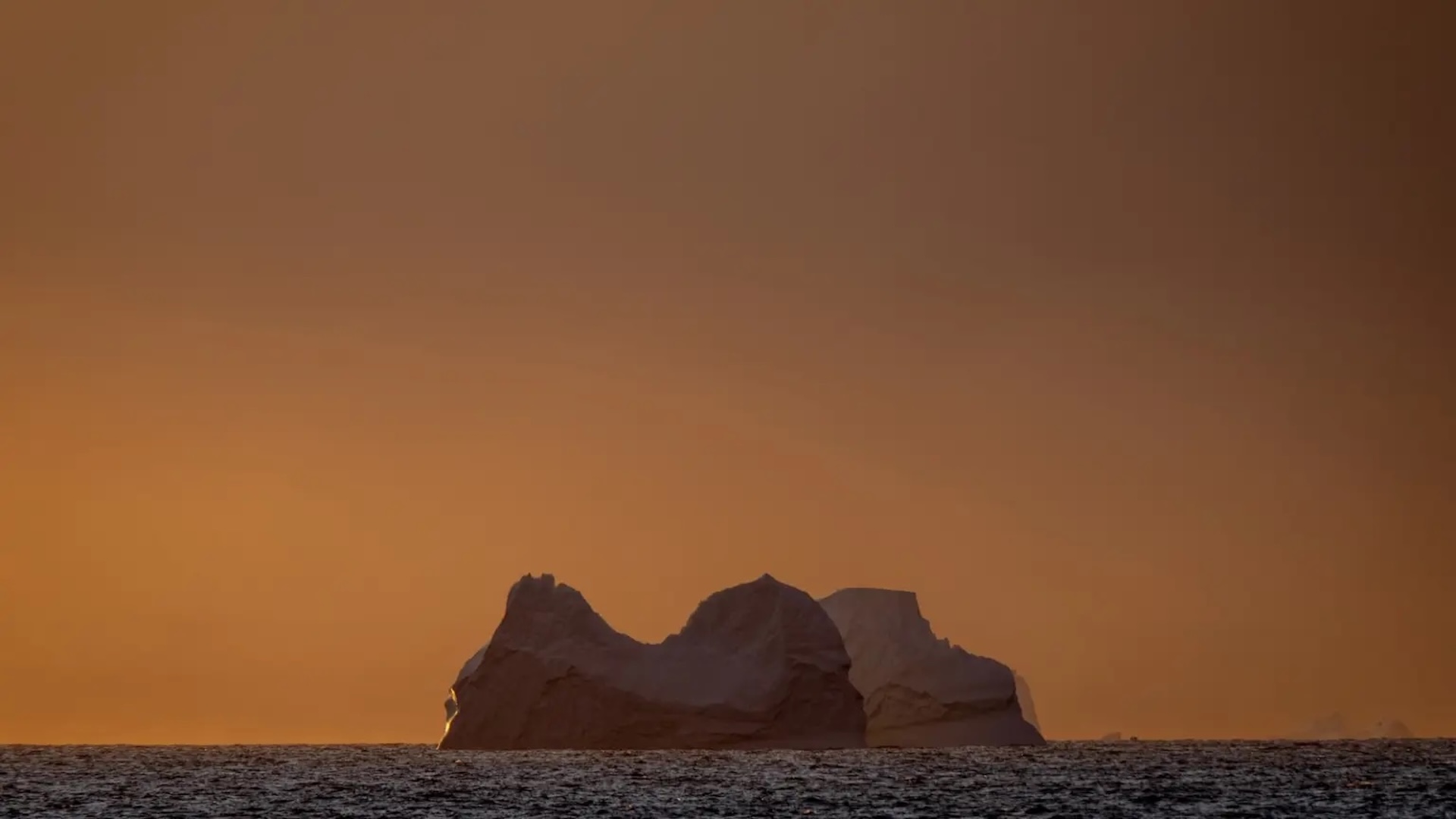'The area has reactivated': Iceland volcano gears towards another eruption leaving Grindavík in precarious position
Iceland volcano appears to be gearing up for another eruption as more magma accumulates beneath the surface and the land around Svartsengi continues to rise.

Another volcanic eruption in Iceland could be imminent as magma continues to accumulate and move in a corridor that runs beneath the town of Grindavík, scientists warn. Authorities have also said that the land around Svartsengi, about 2.5 miles (4 kilometers) to the north, is continuing to rise — another sign this pulse of volcanic activity is not over.
According to a translated statement from the Iceland Met Office (IMO), magma is accumulating below the surface, as was the case before the previous eruptions on Dec. 18 and again in Jan. 14. "When a magma vent forms near the surface, the earth's crust is strained and land sinks over the center of the magma vent," IMO representatives wrote. "Furthermore, the earth's crust pushes up on either side of it."
If magma accumulation had stopped, the land around Svartsengi should have started to subside. "This is not the case, and it is therefore clear that magma is accumulating as before," the statement noted.
In Grindavík, the ground is continuing to deform, with new cracks appearing while existing ones are getting wider, according to the IMO statement.
With magma still accumulating and moving around, the risk of another fissure opening and lava spilling out remains. The geology of the region is highly fractured, so working out exactly where another eruption could take place is not possible, Carmen Solana, associate professor in volcanology and risk communication at the University of Portsmouth in the U.K., told Live Science.
Related: Situation in Grindavík has 'become very bleak' following new eruption
"The area has reactivated," she said, adding that while experts can't be sure whether another eruption will take place, the current signs suggest it is likely. "The fact that it [the ground] hasn't deflated as it should given the volume [of magma] that has come to the surface, it's more likely than not that more magma will come to the surface," she said.
Get the world’s most fascinating discoveries delivered straight to your inbox.
What happens next is unknown, but the situation on the Reykjanes Peninsula is precarious. The three fissures that have appeared so far are all part of the same system beneath the surface. Magma accumulates and tunnels into weak points in the crust, eventually breaking through to the surface. In each of the previous events, lava has stopped flowing within days, then the cycle seems to start again.
Þorvaldur Þórðarson, professor of volcanology at the University of Iceland, told the Iceland Monitor he believes another eruption is coming. "We could be looking at a recurring event," he said. "We fill it [the magma chamber] and drain it and fill it again and drain it again."
How long this could last will depend on how much magma there is — something scientists don't know. So these eruptive phases could continue, with new fissures appearing at any time.
If the volcano does erupt for a third time, the magma will ascend through different conduits to the surface, with weaker areas being the most likely points for an eruption, Solana said. The ground beneath Grindavík is highly fractured — but this doesn't mean that is where the next fissure will appear. In November, the town looked to be one of the most likely points for the magma to break through the surface, but then the eruption eventually took place a few miles to the north.
"Where the magma will come next can shift very quickly depending on where the magma finds the weakest point in the crust," Solana said. "We don't know where the next one is going to happen and we don't know how large it will be. That's the sad part of volcanology — we know that something is going to happen and you know roughly where, but you cannot pinpoint with that precision."

Hannah Osborne is the planet Earth and animals editor at Live Science. Prior to Live Science, she worked for several years at Newsweek as the science editor. Before this she was science editor at International Business Times U.K. Hannah holds a master's in journalism from Goldsmith's, University of London.


